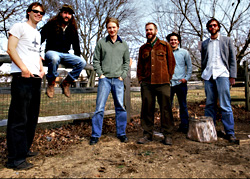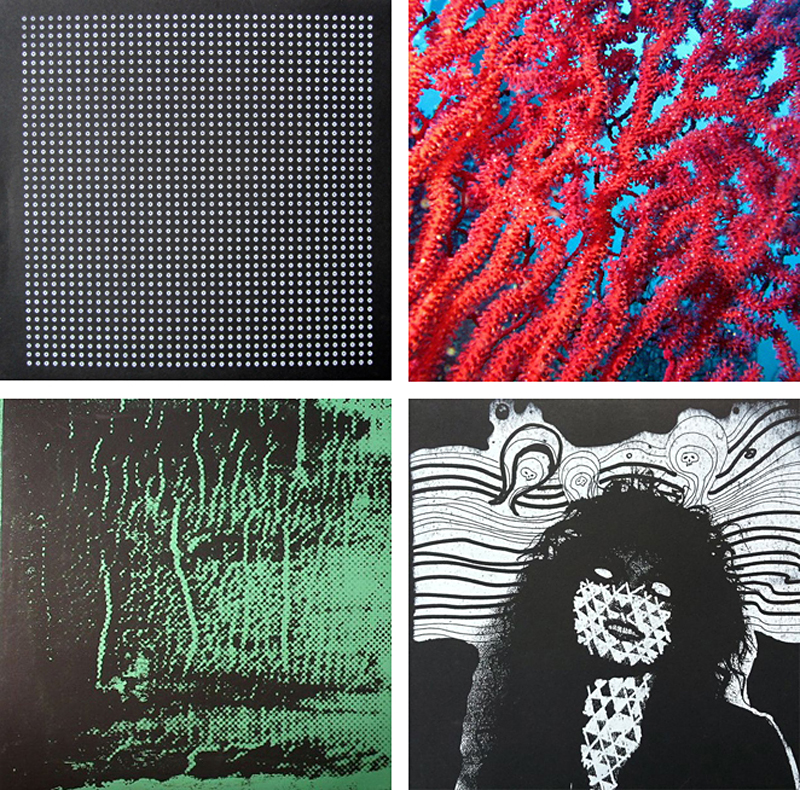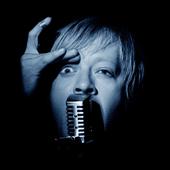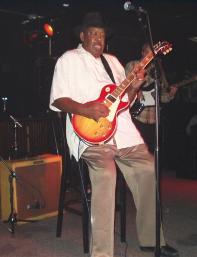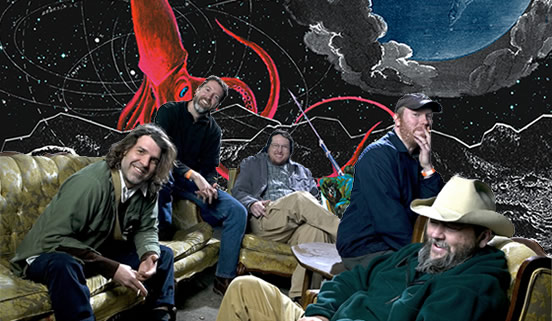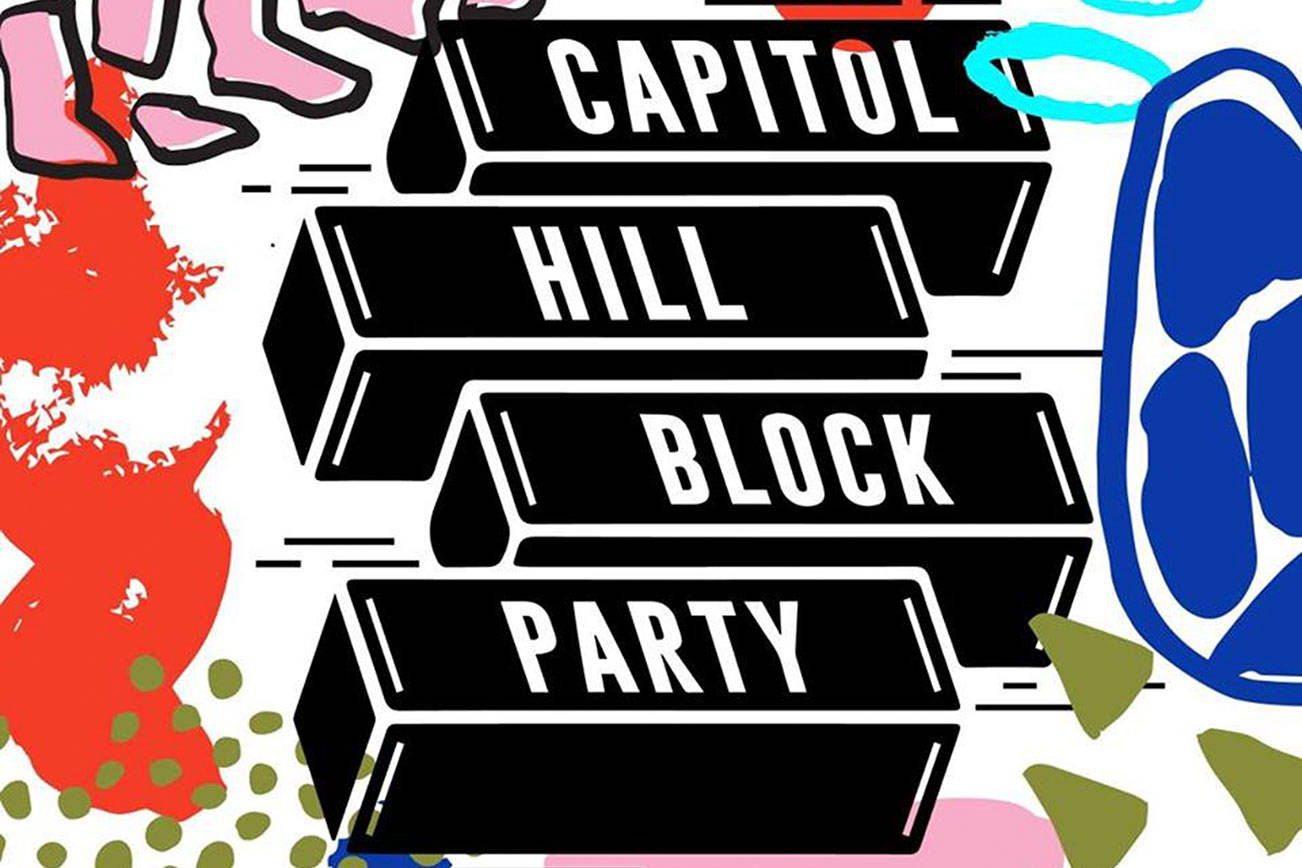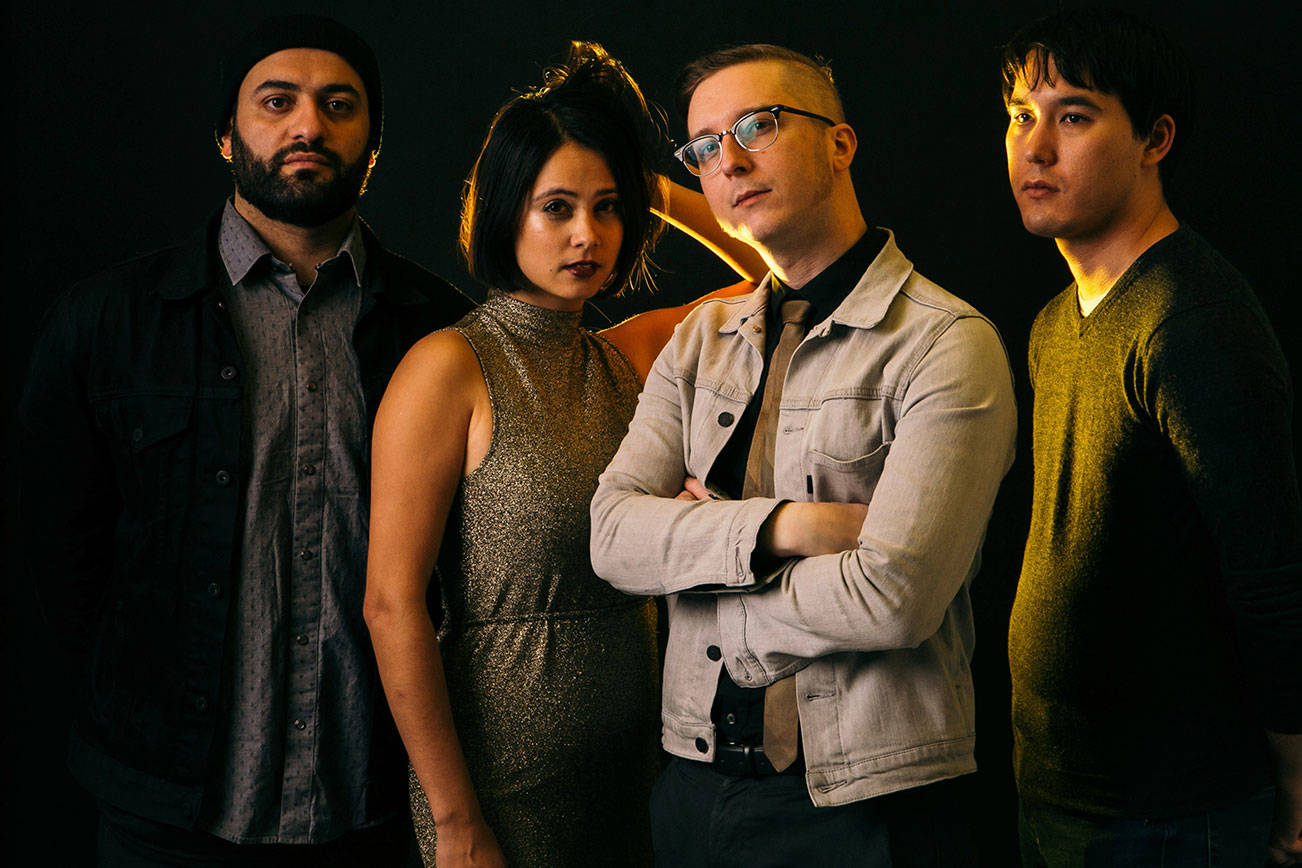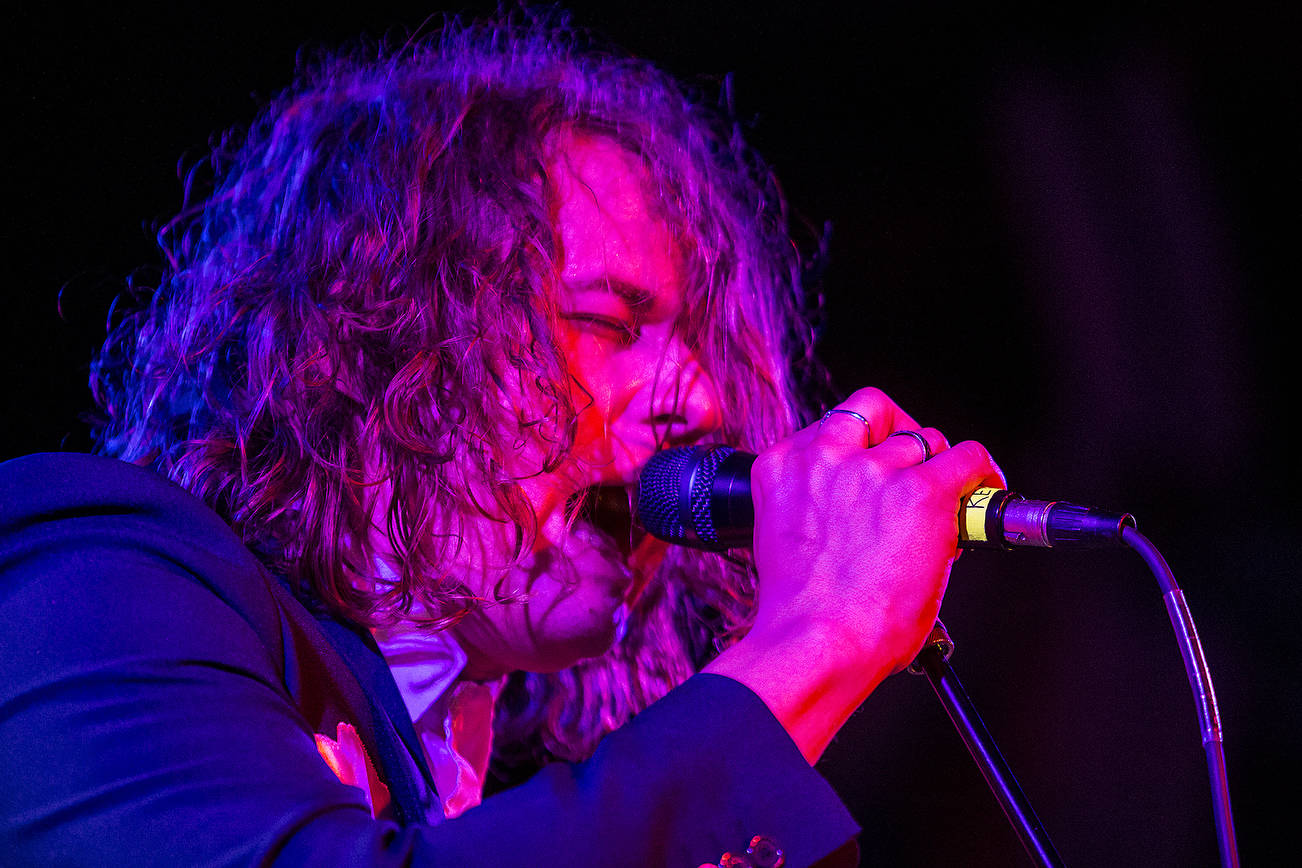I‘ve always believed that traditional music + punk rock is an aesthetically bankrupt proposition. That’s why I don’t listen to Gogol Bordello or any other band tagged gypsy-punk or klezmer-punk or cow-punk or Celtic-punk. Despite the very noble but ultimately misguided notion that all music is folk music, there exist irreconcilable differences between punk’s self-righteous amateurism and the finely crafted simplicity of folk music. To try to fuse the two is like IKEA designing easy-to-assemble Shaker furniture complete with that crappy little Allen wrench.
I used to dismiss the Hackensaw Boys the way I do those wacky gypsies mentioned above—that is, until they made me a devout believer last year. Fellow music writers have always described them as an Appalachian string band with punk attitude. Although I ultimately reject such a tag, it does carry some weight when you see the sextet perform on its home turf: any street corner, bluegrass festival, or country roadhouse in or around the Piedmont and Blue Ridge Mountains. In these parts a specific subculture—young outsiders who can’t live anywhere but inside these massive folds of earth—has adopted the Boys. You can spot them wandering damn near every eccentric little ‘ville dotting Virginia and the Carolinas: Charlottesville, Asheville, Greenville, etc. They resemble the ragged offspring of silent-movie hobos and crust punks, of calico-clad mountain women and furry riot grrrls.
“I know lots of those guys,” laughs mandolin player Rob Bullington, phoning from the Hackensaw Boys’ tour van en route to the Pacific Northwest. “We all aspire to be one ourselves, I’d guess you can say.”
These kids go apeshit for the band’s raucous jams: drunken clogging, fierce twirling, and these frenzied circle dances when the band penetrates the dance floor for its show-ending tribal folk throwdowns. I just caught their act in the mountains of western North Carolina, and these kids partied hard. The plywood floor rocked with an anarchic energy that I’d only ever felt at Lightning Bolt and early Andrew W.K. gigs. By the end of the show, I totally believed half of them were headed for puke puddles and bloody noses followed by hysterical fits of laughter. Some tear-stained cheeks, too.
For those of you down with punk history, what I just described might read like a scene from Jon Savage’s classic England’s Dreaming: Anarchy, Sex Pistols, Punk Rock, and Beyond. Yet the chaos and abandon swirling about the Boys’ music has little if anything to do with Sid Vicious and Johnny Rotten. It feels too archaic, too grounded in the group’s Southern heritage. It’s string band music, plain and simple. Mandolin, banjo, fiddle, and so on.
Of course, you’d be hard-pressed to find many people granting the band entrance into that rustic clapboard-cabin pantheon known as “tradition.” A lot of fans of American roots have never heard a release from Revenant or Arhoolie, specialty labels chronicling folk music’s wilder sides. They don’t equate the Hackensaw Boys’ raw vibrancy with the old-time ways, which in their eyes is more about idyllic ballads and laid-back weekend festivals in the country. Hell, try reading them an excerpt from Nick Tosches’ Country: The Twisted Roots of Rock ‘n’ Roll, or better yet spin them side five of Smithsonian Folkways’ Anthology of American Folk Music, and they’re likely to start squirming in their ergonomic lawn chairs.
“We feel like we’re not straying too far from a lot of the old recordings,” agrees Bullington, whose uncle was in the Roanoke Jug Band. They recorded for the legendary Okeh label in the late ’20s. “That stuff can get pretty crazy,” he adds.
That fifth side of the Anthology is indeed pretty crazy. It contains “Sugar Baby,” moaned by Dock Boggs, of whom Greil Marcus once wrote that he “sounded as if his bones were coming through his skin every time he opened his mouth.” That’s how the Hackensaw Boys sounded the night I saw them, especially on the tune “Oh, Girl,” which is basically one of them fuck-me-over-and-I’ll-kill-you jams. The chorus is simple: “Oh, girl/Are you avoiding me?/Oh, girl.” But it was how the band and nearly every one of their fans howled those words. They invested in them the threat of real-life action, words turned into force, something which only comes with direct experience. However mythologized, that’s something I’ve never really felt listening to modern folk music. I mean, it’s not as though people in the mountains are going around with pitchforks impaling one other. Yet there’s a relative isolation around here that loosens the limits on a community’s social contract just a wee bit. People are a little rougher, a little more out-there in many respects.
“There’s a certain desperation and independence there that we tap,” explains Bullington, who’s also quick to point out that the Boys aren’t from the actual mountains, but the foothills. “We all dwell on that…except for Shawn [Galbraith], the banjo player. He’s trained his brain to be happy all the time.”
Of course, the mountains, as well as the Piedmont, are rapidly changing; just ask any lifer. Old highways have been gutted for interstates, and peaks once shrouded in dark forest are now gated communities home to faux log cabins. Those who like their folk music rough fear the unruly ghosts haunting the Hackensaw Boys’ music will fall silent any day now.
Bullington isn’t so dire. “It does bum me out, but it’s important to take the long view,” he says. “Back in my grandfather’s day, I’m sure they were shocked when the roads got paved. I don’t enjoy a lot of the changes that are happening. But I don’t think it’s necessarily the end. I think the people and heritage are stronger than that.”
He’s got a point…
“I’m gonna buy my love a black SUV/I’m gonna sink it in the deep black sea/Oh, Girl.”
